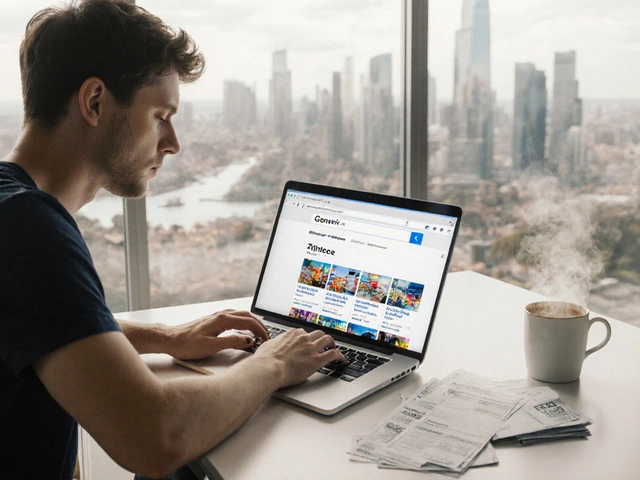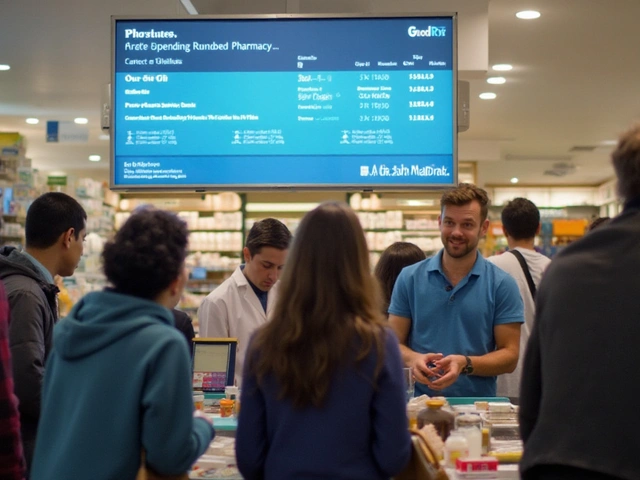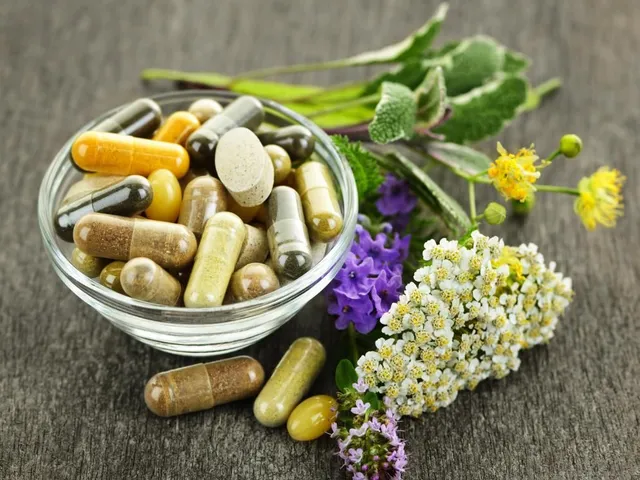If you’ve ever noticed a rough spot on the back of your hand after a long summer, you’ve probably seen the early signs of actinic keratosis. This common skin lesion isn’t just a cosmetic nuisance; left unchecked, it can turn into a serious skin cancer. The single most effective barrier against this progression is sunscreen. Below we unpack why sunscreen matters, how it works, and what you need to do to stay one step ahead of UV damage.
What Is Actinic Keratosis?
Actinic Keratosis is a rough, scaly lesion that forms on sun‑exposed skin after years of ultraviolet (UV) radiation. The condition typically appears on the face, scalp, ears, neck, hands, and forearms. While most lesions stay benign, about 1% progress to squamous cell carcinoma each year, according to dermatology research published in the Journal of Clinical Dermatology.
UV Radiation: The Root Cause
UV radiation is split into UVA (320‑400nm) and UVB (280‑320nm). UVA penetrates deeper, driving photodamage and premature aging, while UVB is the main culprit for DNA mutations that lead to actinic keratosis. UV Radiation is a portion of sunlight that carries enough energy to damage skin cells. Studies from the Australian Cancer Council show that cumulative UV exposure accounts for over 80% of AK cases in fair‑skinned populations.
How Sunscreen Works
Sunscreen is a topical formulation that absorbs, reflects, or scatters UV radiation to protect the skin. Two key components determine its protective power: the Sun Protection Factor (SPF) and the spectrum coverage (UVA vs. UVB). A higher SPF mainly indicates better UVB protection; however, without broad‑spectrum labeling, UVA rays can still slip through.
Broad‑spectrum sunscreen, defined by the U.S. FDA as a product that blocks at least 33% of UVA rays, is essential for AK prevention because both UVA and UVB contribute to lesion formation.
Types of Sunscreen: Chemical vs. Physical
Modern sunscreens fall into two broad families. Each has distinct active ingredients, mechanisms, and suitability for different skin types.
| Aspect | Chemical Sunscreen | Physical Sunscreen |
|---|---|---|
| Active Ingredients | Octinoxate, Avobenzone, Oxybenzone | Zinc oxide, Titanium dioxide |
| Mechanism | Absorbs UV photons and converts to heat | Reflects and scatters UV photons |
| Typical SPF Range | 15‑50 | 20‑70 |
| Best For | Everyday wear under makeup, oily skin | Sensitive skin, outdoor sports |
| Pros | Light texture, invisible on skin | Immediate protection, reef‑safe |
| Cons | Potential hormone disruptors, may cause irritation | Can leave a white cast on dark tones |
Both types can meet the broad‑spectrum requirement, but if you have a history of actinic keratosis, many dermatologists recommend a physical formula for its inert nature and lower irritation risk.
Choosing the Right SPF for AK Prevention
SPF measures how long it takes UVB to redden skin compared with no protection. An SPF 30 lets you stay in the sun 30 times longer before burning. However, the protection curve isn’t linear; SPF 50 blocks about 98% of UVB, while SPF 30 blocks 97%.
SPF is a rating that indicates the level of UVB protection a sunscreen provides. For individuals with prior AK lesions, the American Academy of Dermatology advises a minimum SPF 30, ideally 50+, applied generously.

Applying Sunscreen Correctly
Even the best sunscreen fails if used improperly. Follow these dermatologist‑approved steps:
- Apply 2mg/cm², roughly a full teaspoon for the face and neck.
- Don’t forget ears, scalp (or wear a hat), back of hands, and tops of feet.
- Reapply every two hours, or after swimming, sweating, or towel‑drying.
- Layer under makeup only after the sunscreen has fully absorbed (about 5‑10minutes).
Dermatologist is a medical doctor specializing in skin health and disease prevention. Regular check‑ups allow early detection of new AK lesions and guide personalized sunscreen regimes.
Complementary Sun‑Safety Measures
Sunscreen is one piece of the puzzle. Adding physical barriers and lifestyle tweaks dramatically cuts cumulative UV dose.
- Wear wide‑brimmed hats and UV‑protective sunglasses.
- Choose clothing with a UPF rating of 30+ for prolonged outdoor work.
- Seek shade during peak UV hours (10am‑4pm).
- Stay hydrated; well‑moisturized skin repairs UV damage more efficiently.
These steps reduce Photodamage is a cumulative injury to skin cells caused by UV exposure., the underlying driver of actinic keratosis.
When to See a Specialist
If you notice a new lesion that is firm, crusty, or continues to grow despite sun protection, schedule an appointment. Early excision or cryotherapy can prevent progression to Skin Cancer is a malignant growth of skin cells, including squamous cell carcinoma and melanoma..
Even if you’re diligent with sunscreen, genetic factors and past UV exposure can predispose you to cancer. A dermatologist can also perform a full skin map, tracking any changes over time.
Putting It All Together
Preventing actinic keratosis doesn’t require a complex regimen-just a solid understanding of UV risk, the right sunscreen, and disciplined daily habits. Choose a broad‑spectrum, SPF50+ product, apply the proper amount, reapply regularly, and back it up with protective clothing and regular skin checks. In doing so, you’ll keep your skin healthier, smoother, and far less likely to develop serious disease.
Frequently Asked Questions
Can I use an SPF 15 sunscreen if I have actinic keratosis?
No. Dermatologists recommend at least SPF30 for anyone with a history of AK because lower SPFs do not provide sufficient UVB blockage to halt new lesion formation.
Do chemical sunscreens increase the risk of skin cancer?
Current evidence does not link chemical sunscreen ingredients directly to skin cancer. However, some chemicals can cause irritation, prompting inconsistent use, which defeats the protective purpose.
How often should I reapply sunscreen on a beach day?
Every two hours, and immediately after swimming, sweating heavily, or towel‑drying. Even water‑resistant formulas lose effectiveness over time.
Is mineral (physical) sunscreen better for sensitive skin?
Yes. Physical sunscreens containing zinc oxide or titanium dioxide sit on the skin surface and rarely cause allergic reactions, making them a safe choice for sensitive or compromised skin.
Can I skip sunscreen on cloudy days?
No. Up to 80% of UV rays penetrate thin clouds, so protection is still needed, especially for those prone to actinic keratosis.
What other habits help prevent actinic keratosis?
Wear UPF‑rated clothing, seek shade during peak UV hours, use wide‑brim hats, and schedule annual skin examinations with a dermatologist.






Comments
One cannot simply overlook the philosophical gravity of sunscreen in the grand tapestry of dermal defense 🌞. The sun, in all its radiant ambition, seeks to inscribe its legacy upon our epidermis, yet we possess the quiet agency to resist. By applying a broad‑spectrum shield, we engage in a subtle act of rebellion against relentless photodamage. Let us therefore consider each application not merely as routine, but as a rite of preservation.
Great post! For anyone wanting extra protection, consider re‑applying every 80 minutes if you’re swimming or sweating heavily 🏊♀️. Pair sunscreen with a mineral‑based antioxidant serum to boost repair after sun exposure. Also, remember that a higher SPF isn’t the only factor-look for "broad‑spectrum" on the label to ensure UVA coverage. Stay safe out there!
Wow!!! This articl is sooo ovverrated!!! I guess some peopel think sunscreen is mag!??!!!
Hey Sarah, I get the frustration-sometimes the hype feels endless. Still, the science behind UV damage is solid, and a simple habit like slathering on sunscreen can make a huge difference over years. If you find it cumbersome, try a spray or stick for quick touch‑ups. It’s all about finding a routine that feels natural.
While the article is fairly informative, it unfortunately neglects to mention the superiority of locally‑manufactured formulations, which tend to adhere better to native skin chemistry. Moreover, the occasional grammatical slip-such as "photodamage" without a hyphen-detracts from its credibility. It would be wise to prioritize home‑grown products over imported ones.
Sun‑kissed skin can be a canvas of resilience when you paint it with mineral sunscreens-zinc oxide and titanium dioxide dance like guardians, reflecting those relentless rays. No need for a novel; just a generous dab and you’re set.
While I respect the earnest enthusiasm behind this guide, I must point out that an overreliance on sunscreen alone can foster a false sense of security. First, many consumers misunderstand the meaning of SPF; the number is not a linear scale, yet the article skims over this nuance without proper emphasis. Second, the efficacy of any sunscreen diminishes dramatically when applied in insufficient quantities-yet real‑world application habits often fall short. Third, the notion that SPF 30 is universally adequate neglects the variability in individual skin phototypes and cumulative lifetime exposure. Fourth, the piece omits discussion of the potential endocrine‑disrupting effects of certain organic filters, a topic that remains contentious but deserves acknowledgment. Fifth, the environmental impact of oxybenzone and octinoxate on coral reefs is brushed aside, despite mounting evidence prompting bans in several jurisdictions. Sixth, the article fails to address the role of vitamin D synthesis, which can be inadvertently suppressed by excessive sunscreen use. Seventh, there is an assumption that all readers have equal access to high‑quality products, ignoring socioeconomic disparities that limit choices for many. Eighth, the recommendation to reapply every two hours does not consider real‑life scenarios where people may be unable to reapply promptly, such as during long commutes or outdoor labor. Ninth, the advice to layer sunscreen under makeup could lead to clogged pores for those with acne‑prone skin, a nuance omitted here. Tenth, the guidance on using a "full teaspoon" is overly precise; many people will find it impractical without a visual cue. Eleventh, the article neglects the emerging data on peptide‑based sunscreens that may offer superior protection with fewer side effects. Twelfth, the suggestion to use hats and UPF clothing is brief, lacking deeper insight into fabric technology. Thirteenth, the piece does not explore the psychological aspect of sun‑avoidance behaviors and how they intersect with cultural norms. Fourteenth, the description of actinic keratosis could benefit from a more detailed histopathological perspective. Fifteenth, the FAQ section, while helpful, repeats information already covered, indicating a missed opportunity for conciseness. In summary, sunscreen is a vital tool, but it should be integrated into a broader, nuanced sun‑safety strategy that accounts for individual, environmental, and societal factors.
Benjamin, your exhaustive list, while impressive, reads like a manifesto against practicality. The average person simply wants a clear, actionable plan-not a dissertation on every possible variable. By piling on fifteen points, you risk paralyzing readers with analysis‑paralysis. Most of the concerns you raise-such as endocrine disruptors or vitamin D suppression-are still debated and not universally accepted, so emphasizing them can create unnecessary fear. In everyday life, consistent, adequate sunscreen application remains the most effective defense against actinic keratosis, regardless of the nuanced debates you present.
Love the vibe here! 🌟 I totally agree that a quick dab of mineral sunscreen can be a game‑changer. My only suggetion is to remember to reapply after a swim-super easy to forget! Keep spreading the sun‑safety love.
While the article provides a commendable overview, it suffers from an over‑reliance on layman phrasing, rendering it insufficient for a medical professional audience. The absence of quantitative data, such as photon absorption coefficients for specific filters, undermines its scientific rigour. Moreover, the conflation of SPF with actual UVA protection reflects a pervasive misunderstanding that must be rectified with precise metrics like PA rating or UVA‑PF. Consequently, the piece serves more as a superficial public service announcement than a robust dermatological resource.
Great info! If you’re new to sunscreen, just remember: apply enough, reapply often, and wear a hat. It’ll keep your skin happy.
Apply sunscreen generously.
Think of sunscreen as the armor you would wear before stepping onto a battlefield of UV rays. Each application is a promise to your future self, a pact that says you value longevity over momentary comfort. By embracing this ritual, you transform a mundane task into an act of self‑respect, fostering a mindset that prizes health and foresight.
Totally agree 🙌 it’s all about consistency and using the right product 🚀
Let’s be clear, the core principle underlying effective photoprotection, which, as an informed individual, you should internalize, is that the SPF metric, which stands for Sun Protection Factor, quantifies the ratio of UV radiation required to cause erythema on protected skin compared to unprotected skin; consequently, a higher SPF does not linearly translate to a proportionally higher protection level, yet the public perception often misconstrues this nuance, leading to either overconfidence or undue complacency, both of which can be mitigated by proper education and disciplined application habits.
Ah, the noble pursuit of sunscreen enlightenment-how delightfully earnest! One might suggest, with the utmost respect, that a sprinkle of humility could enhance the discourse. Nonetheless, your thoroughness is, undeniably, commendable.
When we contemplate the sun's relentless gaze, we find ourselves at the intersection of nature's grandeur and human vulnerability. Yet, with a simple communal ritual-slathering on broad‑spectrum sunscreen-we assert agency. It’s both informal in practice yet formal in its implication for public health.
Honestly this article is just another hype train. Sunscreen? Sure, but the real issue is the lack of real education. People just spray and think they’re invincible.
🌺 Embracing sunscreen is like weaving a vibrant tapestry of protection-each layer bursting with color, guarding our skin while celebrating cultural diversity. Let’s spread this radiant habit across every community!
Good tips, just a lil typo in "sunscreeen" but still solid advice.